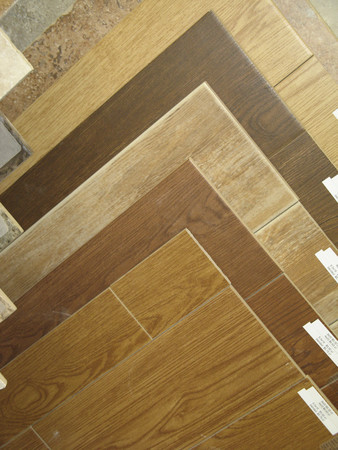Just an illusion
If it looks like stone, it must be stone. Right? Not necessarily.
Today's manufacturers have perfected techniques to duplicate many of Mother Nature's creations, allowing homeowners to accent their residences at a fraction of the cost and with greater ease.
Consider the stones offered by Eldorado Stone. They aren't stone at all. The engineered stones, rocks and bricks are cast using handcrafted molds of real stones and finished in natural color palettes that capture all the nuances of their real counterparts.
The stone veneers are lighter weight and designed to adhere to a variety of surfaces without the wall ties and footings required for the heavier natural materials. They also cost about a third to a half less.
"In the past, stone was used mainly in exterior applications with our most popular profiles reflecting an Old World, Italian look applied with a heavy overgrout technique," said Brett Spann, vice president of marketing for the company. "But today, designers and architects are eager to bring the look and feel of natural stone indoors."
Showcasing the company's new cut coarse stone at the recent Hospitality Design Expo in Las Vegas, sales representative Jeff Soares said using stone indoors adds natural warmth to any setting.
And because of their lighter weight, the company's products can be installed from the top down, instead of the traditional way that begins at the bottom. Soares said this is a cleaner method. Additionally, the various stones and rocks are designed to fit together without having to chisel away irregular pieces, which helps reduce installation costs as well.
Eldorado Stone is available locally through Apache Stone, Avanti Masonry and John Deere Landscapes.
Another popular feature, granite countertops, also has a lower priced alternative. Thomas Kitchen Art has developed Giani, a $39.95 painting kit that transforms laminate countertops into granite look-alikes.
"It's really simple and was designed to be mastered by those of all skill levels in regards to painting," said Tim Haas, director of marketing.
Basically a paint-by-numbers project, the kit provides step-by-step instructions along with all the tools and materials needed.
Haas said the key to creating countertops that look like granite comes from the black primer and three colored minerals that are applied with a special sponge.
"Sponging is a lot easier that most people imagine," he said. "And the nice thing about sponging on granite is there is no right or wrong."
The minerals are applied in numerical order on small sections of the countertop allowing them to blend and take on the look of natural granite. "So instead of three shades, you now have 12," Haas said.
Available in two colors, Sicilian Sand and Bombay Black, the paint also works on Corian, ceramic tile, wood and cultured marble.
Thomas Kitchen Art evolved after an employee of the parent company, Eagle Specialty Products, was seeking a way to paint his kitchen appliances to make them look like stainless steel. Eagle Specialty Products, which manufactures 200 specialty chemicals used in coatings to protect surfaces on aircraft carriers, kitchen appliances and medical devices, created a liquid stainless steel material and realized there must be other people who wanted a specific look but couldn't afford the real product. So, the granite paint was developed to provide an inexpensive alternative for home decorators. It took about a year of research and trial and error to find the right mixture of 100 percent natural minerals and polymers to get the paint to adhere to other surfaces and meld into the granite look, Haas said.
Giani granite kits are available at small hardware stores nationwide and on the company's Web site, www.gianigranite.com.
When it comes to flooring, wood has always been in demand. But it mars easily and can warp with changes in the humidity. Enter laminate.
"The number one choice in flooring today is laminate. It can do things wood will not for half the price," said Jim Willbanks, owner of Willbanks Flooring in Las Vegas. "It's more durable, tougher, won't scratch and is resistant to stains."
It's also much improved from the first laminates offered on the market. Today's laminates are more realistic looking and with the proper padding don't have a hollow sound when you walk on them.
"It helps them react more naturally," Willbanks said of the padding that is installed below the pieces of laminate flooring.
Aside from the cost factor, Willbanks said laminates are easier to care for than real woods. They just require some periodic dry dusting. Because they are stain and scratch resistant, you don't have to sand the floor to get it back to its original state.
Another alternative is ceramic tile that looks like wood planks. The tiles can be separated and put back together in mosaic fashion to create the look you desire, Willbanks said. They work especially well in areas with a lot of moisture, such as kitchens and bathrooms.
The tiles, however, are pricey and cost about twice as much as traditional ceramic tiles.






















